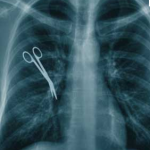 Worst Medical Technology Dangers – Here’s Your Dirty Dozen
Worst Medical Technology Dangers – Here’s Your Dirty Dozen
Medscape Today has published its list of the “12 Worst Medical Technology Dangers”. Looking at the list … it would be more accurately described as a list of error prone systems within healthcare. Each of these technologies work magnificently, until we throw humans into the mix … or fail to put systems into place to address the known medical error risks.
The list is based on research by the ECRI Institute of Plymouth Meeting, Pennsylvania, an independent nonprofit organization that studies improvements to patient care. The ECRI named their top ten and Medscape kicked in two more “from last year” to reach the round one dozen in the title.
Each hazard met 1 or more of the following criteria:
- It has resulted in injury or death
- Occurs frequently
- Can affect a large number of people
- Has been widely publicized
- There must be steps that hospitals can take to lessen the risks
Here’s a quote:
“With so many health technologies being used, it can be difficult for hospitals to prioritize their safety efforts,” says James P. Keller, Jr., ECRI Institute’s Vice President, Health Technology Evaluation and Safety. “Our list can be used as a guide to help them focus on the most important issues.”
The 12 Worst Medical Technology Dangers are …
1) “Alarm Fatigue” Hazards
Alarms on medical devices, such as infusion pumps, ventilators, and dialysis units, are designed to warn of potential dangers to patients. The staff may become desensitized to the frequency with which alarms are sounded and become complacent, delaying needed action.
2) Exposure Dangers From Radiation Therapy and CT
Life-saving radiation therapy can have devastating consequences if errors occur. “There isn’t a good reporting system in place to define what is a reportable event,” says Keller.
3) Medication Administration Errors When Using Infusion Pumps
Mistyping information, entering it into the wrong field, and other data-entry mistakes can be dangerous or even fatal. Doctors, nurses, pharmacists, and others can contribute to errors. Medication orders may be illegible, drugs and solutions may be incorrectly prepared, and a medication may be given to the wrong patient.
4) Failing to Pay Sufficient Attention to New Device Connectivity
Make sure that hardware and software changes, security changes, and planned maintenance are approved and implemented in a controlled manner. (reading through the report … this is where new tech devices don’t talk to the old system and people aren’t aware of the disconnect)
5) Feeding Tube Misconnections
The most serious mistake occurs when nutrients intended for the gastrointestinal tract are inadvertently delivered elsewhere, such as the vasculature.
6) Surgical Fires
There are an estimated 600 surgical fires in the United States each year, almost all avoidable. They can cause fatal airway burns and facial disfigurement.
To avoid surgical fires, each member of the surgical team must understand the role played by oxidizers, ignition sources, and fuels in the operating room.
7) Needlesticks and Other Sharps Injuries
Needlesticks are still a serious problem, exposing health professionals to bloodborne pathogens. A recent survey saw a sharps injury rate among hospital workers in Massachusetts of 28 injuries per year per 100 occupied beds. Another study found that passive safety-engineered devices were significantly more effective than those that were manually activated.
8) Anesthesia Dangers From Mistakes in Pre-use Inspection
Serious problems with anesthesia equipment occur frequently. Reports include misconnected breathing circuits, ventilator leaks, and empty gas cylinders
ECRI’s recommendations: Before the day’s first case, staff members should perform an equipment inspection that includes the model-specific, manufacturer-prescribed full check of the anesthesia unit.
9) Cross-contamination From Flexible Endoscopes (yuck!)
Improper cleaning and disinfection techniques of flexible endoscopes can lead to patient cross-contamination, resulting in life-threatening infections.
10) Problems With Home Use Medical Devices
Approximately 7.6 million people in the United States receive medical care in their homes. Some devices used in the home are designed for use in hospitals by trained professionals, says Keller. Problems may go undetected.
11) Defibrillator Failure
The FDA reports many incidents in which defibrillators failed to work properly. Often, they didn’t discharge during resuscitation attempts for preventable reasons, such as depleted batteries. To make sure that defibrillators are ready at a moment’s notice, hospitals must perform regular preventive maintenance and conduct daily checks recommended by the supplier. (I have participated in an incident of defibrillator failure … not good)
12) Luer (Tubing and Catheter) Misconnections
Tubing and catheter misconnections can allow gases or liquids to enter the wrong lines, often severely injuring patients, such as when fluid meant for an enteral feeding tube enters an intravenous catheter. These risks increase when 2 functionally dissimilar devices each use Luer connectors.
This post adapted from a slideshow presentation on this topic by
Mark Crane published by Medscape Today on the web here ( Full Post Link )


